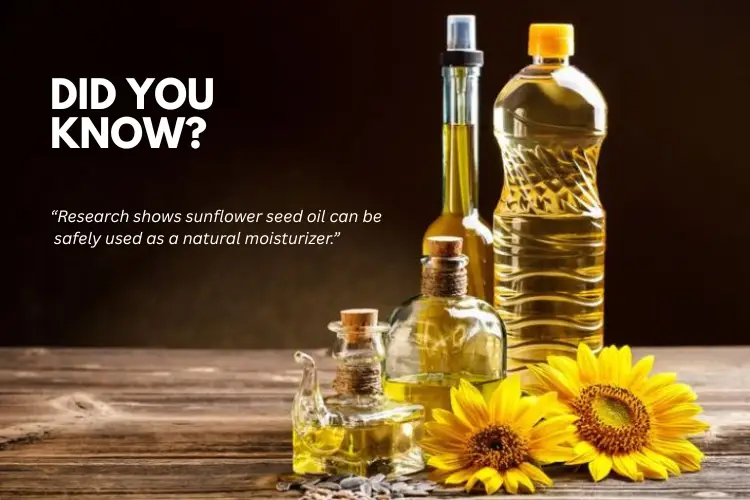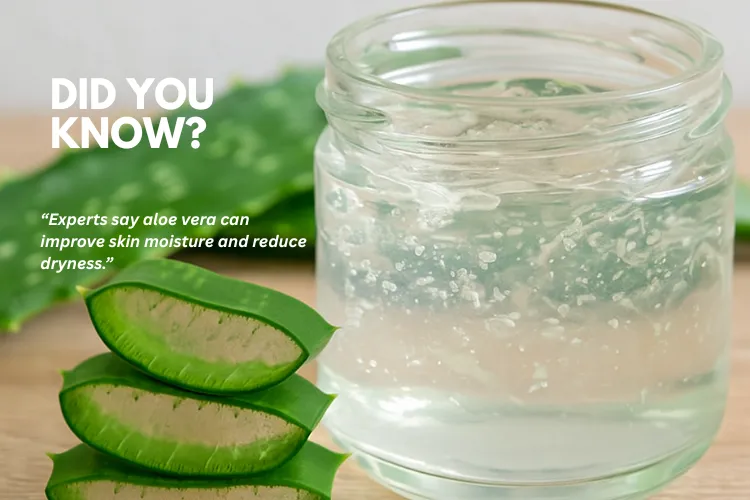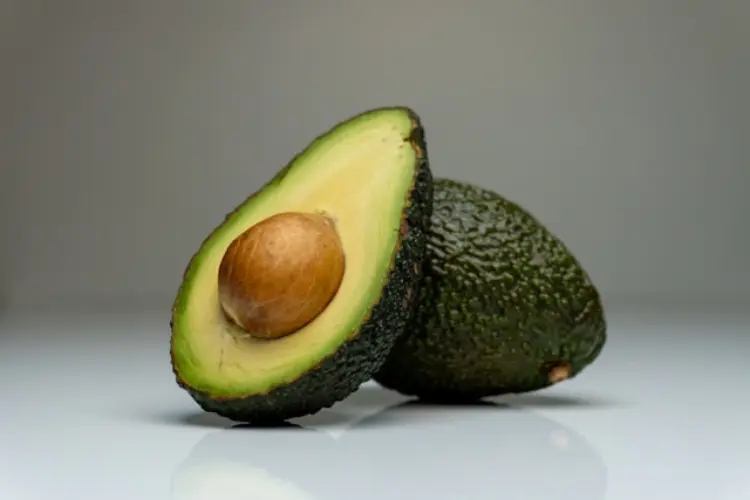Table of Contents
Dry skin on the face isn’t just a little “skin problem.” It messes with your comfort, your confidence, and sometimes your whole mood. And let’s be honest, who has the time (or money) to keep trying product after product that doesn’t even work?
The truth is, you don’t always need expensive products. Coconut oil, honey, and even raw milk have been used for years to calm dry skin—and they actually work.
According to the American Academy of Dermatology (AAD), simple ingredients like petroleum jelly, jojoba oil, and shea butter can help lock in moisture and repair your skin’s natural barrier.
Before you spend on another cream that might not work, here are 10 best home remedies that actually do.
What Are the Main Causes of Dry Skin on the Face?
Before discussing how to treat dry skin, let’s understand why it happens. This helps you fix the root of the problem. Here are the 7 most common causes of dry skin on the face:

- Cold or dry weather: When the air is cold or has low humidity, it pulls moisture from your skin. That’s why dryness often gets worse during winter.
- Hot showers of face washing with warm water: Hot water might feel good, but it strips away your skin’s natural oils, making it dry and tight.
- Harsh face washes or skincare products: Some cleansers and products have strong ingredients or added fragrance that can irritate your skin and make it even drier, especially if your skin is already sensitive.
- Skipping moisturizer or using the wrong one: If you don’t moisturize right after washing your face or use a product that doesn’t suit your skin type, your skin can become dry and unprotected.
- Not drinking enough water: When your body is dehydrated, your skin can feel dry, tight, and dull, too.
- Skin conditions like eczema or psoriasis: These can weaken your skin barrier and make it harder to hold on to moisture.
- Aging: As you get older, your skin naturally produces less oil, which can lead to dryness over time.
Do You Have Dry Skin? (Common Signs)
Okay, so we know what causes dry skin, but how do you know if you actually have it? It doesn’t always look the same, but here are a few common signs.
- Your face feels tight or uncomfortable after washing.
- Flaky or rough patches start showing up.
- Makeup sits weirdly or clings to dry spots.
- Itchiness, especially around the cheeks or jaw.
- Skin looks dull or tired.
If these sound familiar, your skin probably just needs a bit of moisture and the right routine.
10 Natural Home Remedies to Treat Dry Skin on Face
Now that you know what’s causing the dryness, it’s time to fix it. Here are 10 natural remedies that also work as some of the best moisturizers for dry skin at home.
1. Coconut Oil

Coconut oil is a real game-changer when it comes to treating dry skin. In fact, many people wonder: “Is coconut oil good for dry skin?” Yes, it is.
Coconut oil is one of the best natural moisturizer for dry skin. It’s rich in saturated fatty acids that help fill the tiny gaps in your skin barrier, locking in moisture and leaving your skin soft and smooth.
A 2014 study published in the International Journal of Dermatology found that virgin coconut oil was just as effective as mineral oil in treating dry skin (xerosis) and significantly improved skin hydration.
Coconut oil has also been used for generations in Indian and African skincare to soothe dryness, flakiness, and even condition like eczema.
One question we often get is: “What happens if I use coconut oil on my face every night?” It’s a great question! And the answer depends on your skin type.
If your skin is dry or normal, it can really help. But if your skin gets oily or breaks out easily, it’s better to use just a little and see how your skin reacts.
How to use it
Take a small amount of virgin coconut oil (about a pea-sized drop) and warm it between your fingers. Now, gently massage it into dry areas of your face.
How often to apply it
Use it once or twice a day, either after cleansing in the morning or as an overnight moisturizer.
💡 Bonus Tip: If you have oily or acne-prone skin, start with a very thin layer and see how your skin reacts.
2. Sunflower Oil

Sunflower seed oil is lightweight, non-comedogenic, and full of vitamin E, which is great for softening dry skin without clogging pores.
A study published in Pediatric Dermatology found that sunflower seed oil not only improves skin hydration but also helps protect the skin’s barrier. Unlike olive oil, which may cause damaged skin, this natural oil is rich in essential fatty acids like linoleic acid, helping the skin retain moisture and stay healthy.
Furthermore, it is specially beneficial for moisturizing dry skin and soothing eczema, as it deeply hydrates, preventing dryness and flakiness.
How to use it
Apply a few drops on clean, damp skin after showering. You can also mix it with jojoba or argan oil. Gently rub it in, especially on dry spots. It helps keep your skin soft and healthy.
How often to apply it
Use once or twice daily, depending on how dry your skin feels.
3. Petroleum Jelly (Vaseline)
Petroleum jelly (also known as petrolatum or Vaseline) is one of the most effective and affordable ways to treat dry skin.
Mayo Clinic explains the many benefits of petroleum jelly in this YouTube video.
It forms a protective layer on the surface of your skin, which helps lock in moisture and gives your skin time to heal and rehydrate. It’s gentle enough for sensitive skin and safe to use even on babies.
Now, a common question people ask is: “Is Vaseline good for dry skin on the face?” The answer depends on your skin type.
If your skin is dry or sensitive, Vaseline can be helpful because it is gentle and free from added fragrances or irritants. But dermatologists recommend avoiding petroleum jelly on your face if you have oily or acne-prone skin. It can clog pores and lead to breakouts.
In that case, it’s better to use it on dry spots like your elbows, knees, or heels.
How to use it
Apply a thin layer of petroleum jelly on clean, damp skin to lock in moisture. The best time to use it is right after a shower or before bed.
How often to apply it
Once or twice a day is usually enough.
Also read: Don’t want to use moisturizer? Here are 5 natural ways to treat dry skin without using any moisturizer.
4. Aloe Vera Gel

Aloe vera gel is a powerful home remedy for dry skin, providing relief from redness, irritation, and excess dryness, especially in the winter. It’s packed with water, vitamins, and anti-inflammatory compounds that calm irritation and help your skin stay hydrated. Aloe vera has been used for years to soothe dry, cracked, or itchy skin.
One study in 2003 showed that it helped improve dry and irritated hands in people who worked in harsh conditions all day. Their skin started feeling better in just a few days.
How to use it
Take some fresh gel from the plant (or use store-bought pure aloe vera gel) and gently rub it on clean skin. Leave it for 10 to 15 minutes, then rinse it off, or leave it overnight if your skin feels okay.
How often to apply it
You can use aloe vera gel once or twice a day.
5. Honey
Honey is a natural humectant, which means it pulls moisture into the skin. It also has antibacterial and anti-inflammatory properties, which help heal dry, cracked areas and calm irritation.
We’ve seen this question come up a lot, especially in skincare forums: “Is honey actually good for your face?”
Yes, it is. And raw or manuka honey is even better for your skin. It hydrates, soothes, and can even help with mild irritation or redness.
A review published in the Ayu Journal mentions that honey has been used for centuries to moisturize skin, help heal wound, and even treat conditions like eczema and dryness.
How to use it
Take 1 or 2 teaspoons of raw honey and gently massage it onto your clean, dry face. Leave it on for 15 to 20 minutes, then rinse off with lukewarm water.
How often to apply it
Use it 2 to 3 times a week for soft, hydrated skin.
6. Oatmeal Baths
An oatmeal bath is a natural ingredient to treat dry skin by forming a protective barrier that helps lock in moisture and soothe irritated areas.
It would be best to use colloidal oatmeal (ground oatmeal), as it has anti-inflammatory and antioxidant properties. This makes it a powerful folk remedy used for centuries by grandmothers and great-grandmothers.
A study from 2025 found that using a lotion made with colloidal oatmeal helped improve skin dryness, rough texture, and itching.
How to use it
Add 1 cup of colloidal oatmeal to a tub of warm (not hot) water. Soak for 10 to 15 minutes, then gently pat your skin dry.
How often to apply it
Use oatmeal baths 2 to 3 times a week, or whenever your skin needs a little extra care.
7. Antioxidants and Omega-3s

When the skin is dry, it becomes more vulnerable to damaging elements, making it harder to repair skin cells.
According to the Mayo Clinic, eating foods rich in antioxidants can help minimize damage from toxins and promote healthy cells that contribute to skin health.
Including blueberries, tomatoes, carrots, beans, peas, and lentils in your diet provides essential nutrients, while omega-3 fatty acids from salmon support a glowing skin diet. Additionally, fruit enzymes like bromelain (pineapple), papain (papaya), and ficain (figs) contain alpha-hydroxy acids (AHAS) that help exfoliate dull, dead skin cells on the face and body.
What to eat
Eat more antioxidant-rich fruits and vegetables like berries, spinach, and sweet potatoes. For Omega-3s, try salmon, chia seeds, or walnuts.
💡 Bonus Tip: You don’t need to change your whole diet at once. Just start with one healthy swap a day.
8. Milk Compresses
We all know that milk is known for its natural anti-inflammatory properties, making it an excellent remedy for irritated skin. Milk has healthy fats, protein, and vitamin D that help keep your skin soft, strong, and less dry. These nutrients support your skin barrier and can reduce dryness.
Research from 2015 found that a special part of milk (called milk phospholipids) helped the skin stay more hydrated and lose less moisture. The study also showed that milk reduced skin irritation and helped improve the skin’s natural barrier.
How to use it
To create a milk compress, soak a clean cloth or towel in a bowl of cool milk, then place it on dry areas for 5 to 10 minutes to reduce itchy, dry skin.
However, if you feel a mild tingling, be cautious, and if burning occurs, stop immediately and consult a dermatologist or aesthetician.
9. Avocado

Avocados are not just good for your body, but also great for your skin. They’re full of healthy fats, antioxidants, and vitamins that help nourish and protect dry skin.
One small study in 2022 found that women who ate one avocado a day for 8 weeks had firmer and more elastic skin, especially around the forehead area.
Another study found that a mix of water, saffron extract, and avocado oil helped reduce lines and left the skin rejuvenated.
How to use it
You can eat half an avocado a day as part of your regular diet. Or make a simple DIY face mask by mashing 1/2 avocado with a spoonful of plain yogurt and a little honey.
Apply to clean skin, leave for 10 to 15 minutes, then rinse with lukewarm water. You can also use avocado oil directly on dry areas of your skin.
10. Lifestyle Adjustments
Sometimes, small changes in your daily routine can have big impact on dry skin. Here are 7 simple tips to help:
- Wear gloves while cleaning to protect your hands from harsh chemicals and water.
- Keep showers short (5 to 10 minutes) and use warm (not hot) water to avoid drying out your skin.
- Choose gentle, fragrance-free skincare products to reduce the risk of irritation.
- Pat your skin dry with a towel instead of rubbing it.
- Apply moisturizer within 5 minutes of washing your face to lock in moisture.
- Use a humidifier if the air in your home feels dry.
- Dress for the weather—wear sunscreen with SPF 40 in the sun to shield against sunburns and warm gloves during cold weather to prevent dryness.
When to See a Dermatologist
Home remedies are helpful, but if your skin isn’t improving, it’s time to see a professional. See a dermatologist if:
- Your skin feels very itchy, tight, or painful.
- You noticed redness, dry patches, cracks, or peeling that won’t go away.
- You think you might have eczema, psoriasis, or another skin condition.
A dermatologist can figure out the real cause of your skin and suggest the right treatment for your skin type.
Before You Go: A Few Final Thoughts on Dry Skin
Did you know? A large study found that 29.4% of people had dry skin during medical checkups. It was even more common in older adults. That shows how common this issue is.
But you don’t always need expensive creams to fix it. Natural home remedies like coconut oil, aloe vera, petroleum, or honey can greatly help.
Just be gentle with your skin and stick to a simple routine. With a little care, every day can keep your skin soft, healthy, and feeling good. That’s really all it needs!
Which remedy are you going to try first? Share your experience below!
Frequently Asked Questions
Why is my face suddenly so dry?
It could be the weather, a new product you’re using, or even spending too much time in air conditioning or heaters. Sometimes, your skin just reacts to changes in your routine.
Can drinking more water help with dry skin?
It helps a little, but it’s not enough to fix dry skin on its own. You still need to use a good moisturizer on the outside to keep your skin soft and healthy.
When should you avoid using Vaseline on your face?
If you have oily skin or acne-prone skin, don’t use Vaseline on your face. It can clog your pores and cause pimples. But if your skin is very dry or cracked, Vaseline can really help.
Sources we trust for skincare info: